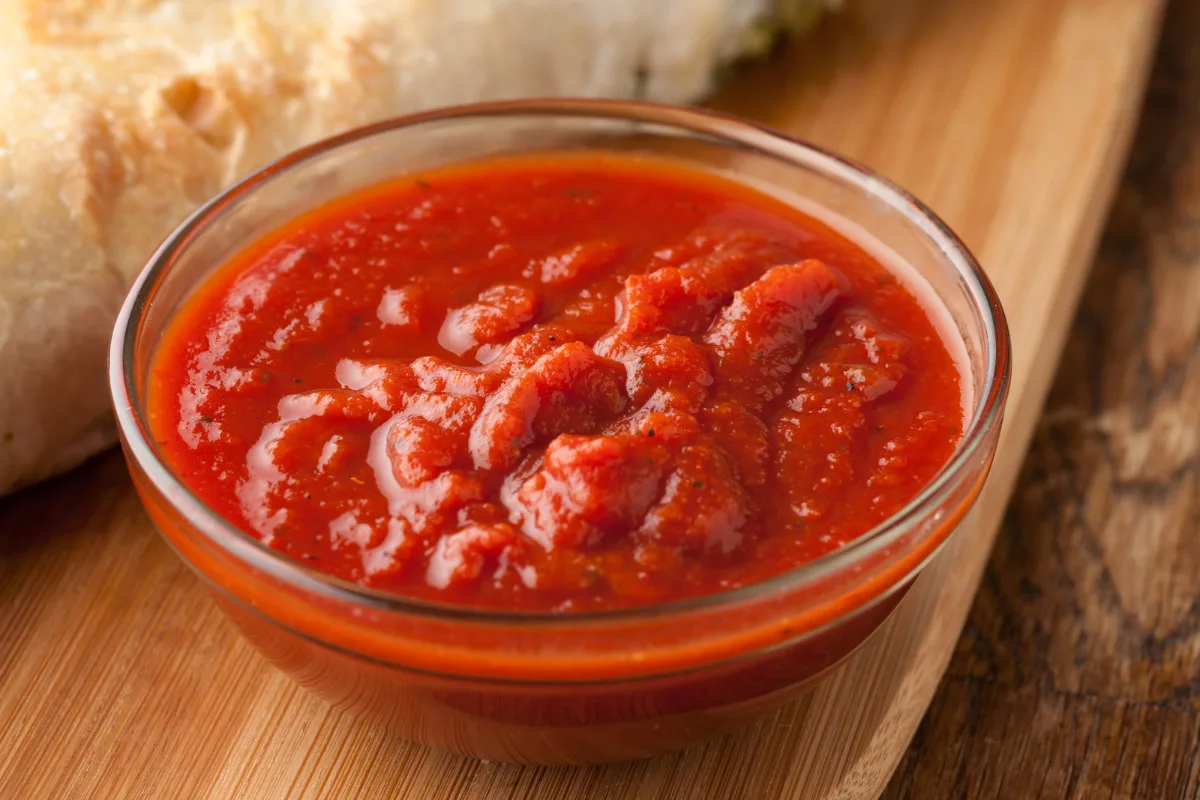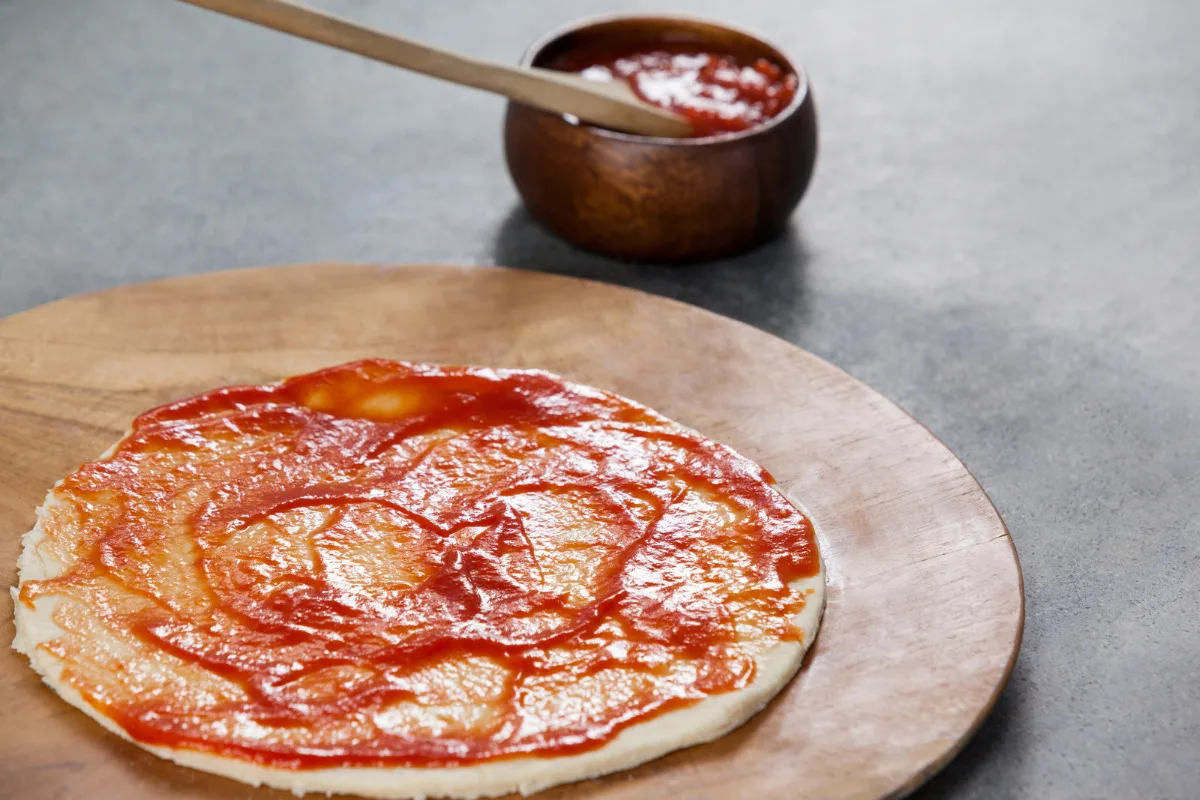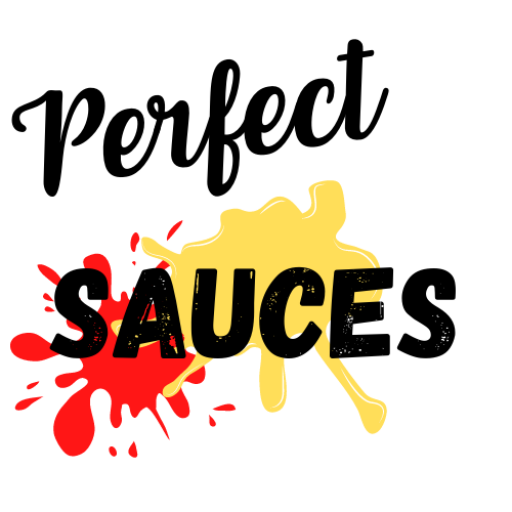Italian cuisine is never truly complete without these two sauces. Pizza sauce and marinara sauce. Much like Italian gravy and Italian sauce, these two sauces hide key differences that could make or break a recipe if not used properly. Pizza sauce is typically cooked with fewer ingredients and has a thicker consistency compared to marinara sauce, which is generally lighter and cooked with a wider variety of ingredients. But what else separates or joins the two?
With so much to consider, let’s compare them head to head. Pizza sauce vs marinara sauce. How do they shape when put to the test? Let’s find out!

Jump To
Choosing Between Pizza Sauce vs. Marinara
We all know that these delicious Italian sauces are made from tomatoes, but that’s about where the similarities run out. The key difference in pizza sauce vs. marinara is the emphasis upon a sweeter tomato-based sauce (pizza sauce). The latter is a more savory tomato-based sauce. Also, the levels of spice and the consistency of the sauces play a big role.
So, which sauce should you choose? It all depends on what you’re looking for in terms of flavor and consistency. If you want a sauce that’s thicker and spicier, then pizza sauce is the way to go. However, if you prefer a thinner, less spicy sauce, then marinara is the better option.
What Is Pizza Sauce?
Pizza sauce is a tomato-based sauce crafted using a variety of ingredients like garlic and herbs. Ripe tomatoes are the primary focus. Like marinara, it contains spices, almost always oregano and basil, as well as salt and crushed tomatoes. These ingredients are cooked with the best ways to thicken sauce, with some tomato paste often being added to strengthen the tomato flavor.
Typically available in jars, pizza sauce is a ready-to-use tomato-based condiment designed specifically for spreading on pizza dough. Many of these popular jar brands are Del Monte, Mutti, and Prego. Del Monte uses vine-ripened tomatoes for more natural sweetness, Mutti emphasizes the use of San Marzano tomatoes, and Prego adds a touch of Italian herbs for its iconic taste.

What Is Marinara Sauce?
Marinara sauce is a classic Italian tomato-based sauce known for its simplicity and rich flavor. The name “marinara” is derived from the Italian word “marinaro,” meaning sailor. It’s typically made from a combination of ripe tomatoes, garlic, onions, and various herbs such as basil and oregano. The delicious and smooth consistency uses only the best techniques to thicken pasta sauce.
The sauce serves as a fundamental component in many traditional Italian dishes like penne alla vodka, lasagna, and spaghetti. Even Arby’s sauces feature a delicious marinara sauce for dipping. Some substitutes for marinara sauce are ragu and Bertolli. They’re quite similar to marinara (with the addition of other ingredients).
Differences and Similarities between Pizza Sauce and Marinara Sauce
Differences:
- Purpose: Pizza sauce is specifically designed for spreading on pizza dough, while marinara sauce is a base for various Italian dishes.
- Consistency: Pizza sauce is often smoother and thicker to prevent a soggy pizza crust, whereas marinara sauce may have a chunkier texture.
- Herbs and Spices: Pizza sauce tends to have a more pronounced focus on specific herbs like oregano and may contain fewer ingredients than the more complex marinara sauce.
- Cooking Time: Marinara sauce is often cooked for a longer duration to allow flavors to meld, while pizza sauce is designed for quicker applications and may be used without extensive cooking.
Similarities:
- Tomato Base: Both sauces are tomato-based, using ripe tomatoes as a primary ingredient.
- Garlic and Onions: Both pizza and marinara sauces commonly include garlic and onions for added flavor.
- Usability: While pizza sauce is tailored for pizzas, both can be used in various Italian dishes, such as pasta and lasagna.
- Commercial Varieties: Both pizza and marinara sauces are available in commercial varieties from well-known brands such as Del Monte, Mutti, and Prego.

🧐 FAQ
This depends on the use. For pizza making you can substitute pizza sauce for marinara sauce. But more dips or pasta sauces you’d probably want to substitute canned crushed tomatoes for marinara rather than pizza sauce.
Yes. But if you’re going to use marinara sauce for pizza, you may want to add more dried oregano and basil. It will also be less thick than a normal pizza sauce.
While you can use whatever sauce you’d like on pizza, a pasta sauce will usually have a lot more basil and a lot less oregano than pizza sauce.
Pizza sauce that’s frozen the day it’s opened should last at least 6 months in the freezer if store in an air-tight container.
